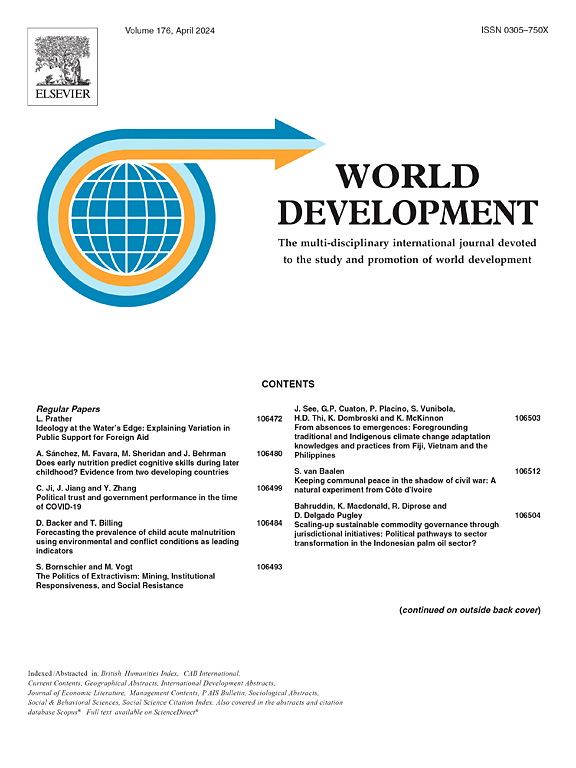转型经济体的结构转型
IF 5.4
1区 经济学
Q1 DEVELOPMENT STUDIES
引用次数: 0
摘要
本文对前苏联国家近年来的经济增长和结构转型进行了比较研究。它介绍了转型经济体的经济转型数据库,该数据库提供了1990年至2019年期间14个FSU国家12个部门的就业、实际和名义增加值的一致年度数据。我们发现,随着工人转移到生产率较低的部门,FSU国家的结构性变化一直是唯一降低增长的变化。这与撒哈拉以南非洲、拉丁美洲、亚洲发展中国家以及中欧和东欧(CEE)的前中央计划经济形成鲜明对比,这些国家的劳动力已从低生产率部门转向高生产率部门。我们的分析显示,由于结构变化模式不同,前苏联国家的平均总生产率增长率每年低0.64个百分点,而中东欧国家的平均总生产率增长率每年高0.31个百分点。我们认为,这些差异源于不同的初始条件、外部因素和改革策略。本文章由计算机程序翻译,如有差异,请以英文原文为准。
The structural transformation of transition economies
This paper places recent growth and structural transformation in the former-Soviet Union (FSU) countries in comparative perspective. It introduces the Economic Transformation Database of Transition Economies, which provides consistent annual data of employment, real and nominal value added by 12 sectors in 14 FSU countries for the period 1990–2019. We find that structural change in FSU countries has been uniquely growth-reducing as workers relocated to less productive sectors. This contrasts to sub-Saharan Africa, Latin America, developing Asia, and the formerly centrally planned economies of Central and Eastern Europe (CEE), where labour has shifted from low- to high-productivity sectors. Our analysis reveals that average aggregate productivity growth was 0.64 percentage points lower each year in FSU countries, while it was 0.31 percentage points per annum higher in CEE countries due to their differing patterns of structural change. We argue that these differences stem from varying initial conditions, external factors, and reform strategies.
求助全文
通过发布文献求助,成功后即可免费获取论文全文。
去求助
来源期刊

World Development
Multiple-
CiteScore
12.70
自引率
5.80%
发文量
320
期刊介绍:
World Development is a multi-disciplinary monthly journal of development studies. It seeks to explore ways of improving standards of living, and the human condition generally, by examining potential solutions to problems such as: poverty, unemployment, malnutrition, disease, lack of shelter, environmental degradation, inadequate scientific and technological resources, trade and payments imbalances, international debt, gender and ethnic discrimination, militarism and civil conflict, and lack of popular participation in economic and political life. Contributions offer constructive ideas and analysis, and highlight the lessons to be learned from the experiences of different nations, societies, and economies.
 求助内容:
求助内容: 应助结果提醒方式:
应助结果提醒方式:


